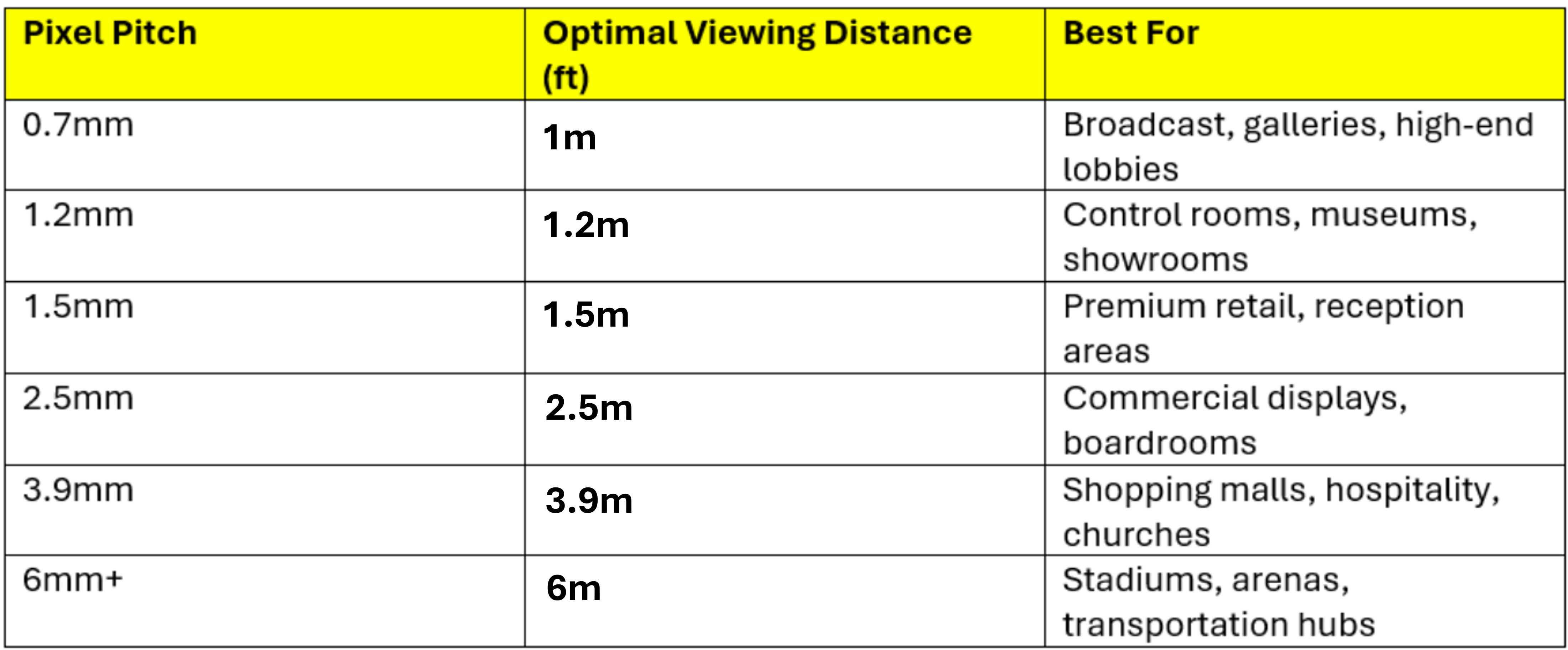When investing in LED displays, it’s easy to assume, “The smaller the pixel pitch, the better the screen.” And on the surface, that’s not wrong — finer pitch means higher resolution. But here’s where many projects go off track:
Most people are paying for pixels their audience will never see.
At The LED Studio, we’re not just screen builders — we’re strategists, space designers, and storytellers. Every pixel should serve a purpose. That means choosing the right pitch for your audience, your environment, and your goals — not just your spec sheet.
Let’s unpack why pixel pitch and viewing distance should always go hand in hand.
What Is Pixel Pitch?
Pixel pitch is the distance (in millimetres) between the centre of one LED pixel and the next. A smaller pitch means more pixels per square metre, resulting in a sharper image.
But with that sharper image comes:
A higher cost per square metre
More components (which means more power draw)
Greater processing requirements
And often, no visible benefit — if the viewer is standing too far away
Pixel pitch matters — but only when matched to your viewing distance.
The Rule of Thumb:
Viewing Distance (in metres) = Pixel Pitch (in mm) × 1.5
The human eye can only resolve so much detail at a given distance. That’s why we use this simple and effective rule for installations:
1.2 mm pitch = 1.5m optimal viewing distance
2.5 mm pitch = 4m optimal viewing distance
3.9 mm pitch = 6m optimal viewing distance

The Real Cost of Over-Specifying
Let’s say you’re designing a 16-metre-wide LED wall in a retail flagship. Most customers will view it from 10 to 15 metres away. You might be tempted to go with a 1.2 mm display for ultra-high resolution.
But will it look significantly better than a 2.5 mm display at that distance?
Not to the human eye.
Not to your customers.
But definitely to your budget.
Spec’ing the wrong pitch can lead to:
Thousands of dollars wasted on unnecessary resolution
Shorter product lifespan from over-processing
Higher installation and service costs
Lower ROI
Smart LED = matching performance to purpose. That’s our approach.
When Fine Pitch Does Matter
There are situations where fine pixel pitch is essential:
Broadcast studios, where cameras catch every detail
Executive boardrooms, where viewers sit within 2 feet
Luxury spaces, where visual precision defines the experience
Museums and galleries, where clarity enhances storytelling
In these cases, our VIVID 0.7 mm and EDGE-i 1.2 mm displays stand out — combining exceptional image quality with whisper-quiet operation and ultra-slim designs.
But for transit centres, malls, stadiums, and hotels? Your dollars are better spent on brightness, durability, and reliability — not pixel pitch.
Pixel Pitch Is Only One Piece of the Puzzle
At The LED Studio, we approach every project as a conversation — not just a spec.
We ask:
Who’s your audience?
Where will they stand?
What kind of content are you displaying?
What level of detail does it actually need?
Is colour accuracy more important than contrast?
How can we reduce cost without reducing impact?
That’s the value we bring. Not just building displays — but building smarter solutions.
Let’s Build Displays That Make Sense
Whether you’re creating an immersive environment, a digital art installation, or a 100-metre outdoor display, one thing stays true:
The right pitch is the one that suits your space — not your spec sheet.
We’ll help you choose it, integrate it, and bring your vision to life — one pixel at a time.
Ready to get it right from the start?
Let’s talk.